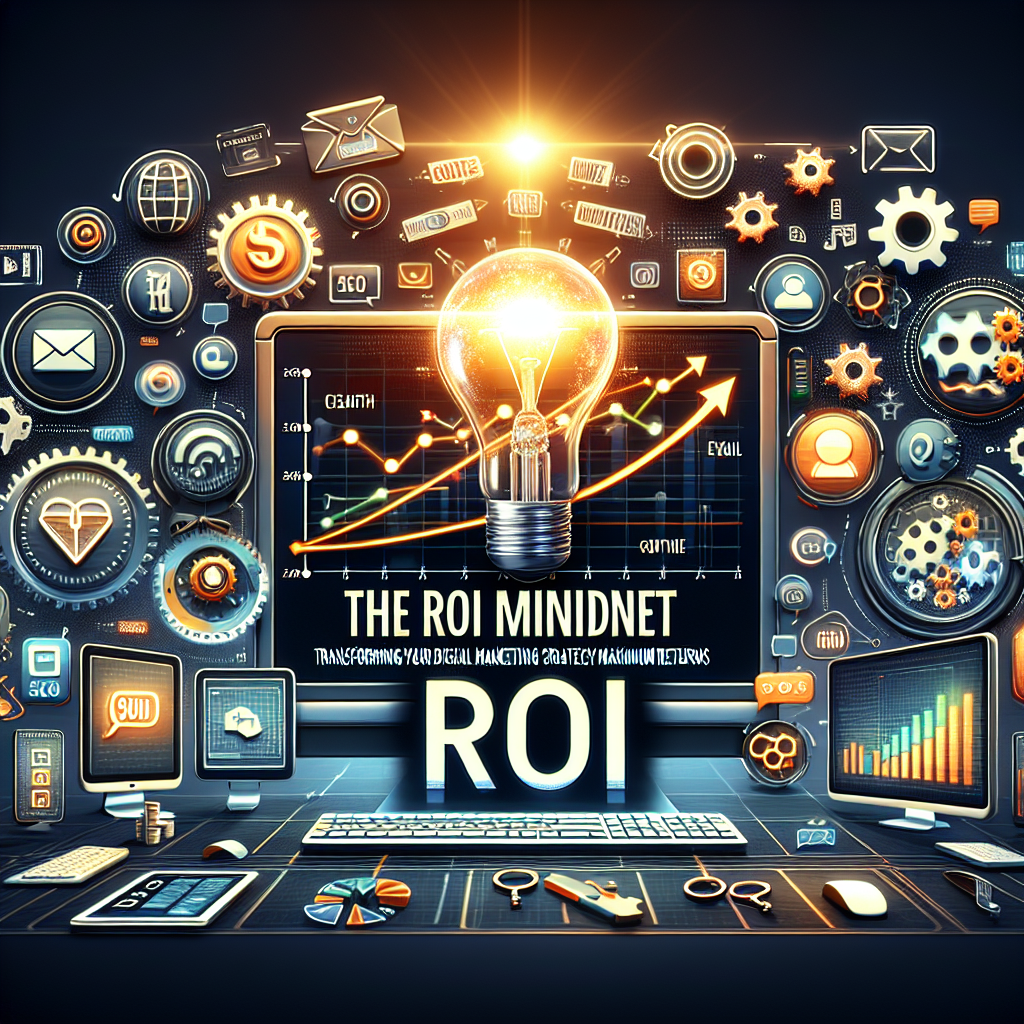In today’s fast-paced digital landscape, businesses must adopt an ROI (Return on Investment) mindset to thrive. The emergence of new technologies and ever-evolving consumer behaviors have made it essential not just to spend on marketing, but to spend wisely. By focusing on strategies that maximize returns, companies can significantly enhance their digital presence, attract more customers, and ultimately drive revenue. This article discusses how to transform your digital marketing strategy to cultivate an ROI mindset.
Understanding the ROI Concept in Digital Marketing
What is ROI?
Before diving into strategic insights, let’s clarify what ROI means in the context of digital marketing. ROI is a performance measure used to evaluate the efficiency or profitability of an investment. In digital marketing, this often translates to measuring how much revenue is generated as a result of specific marketing expenditures.
Why Focus on ROI?
Focusing on ROI not only helps allocate marketing budgets effectively but also enables businesses to make data-driven decisions. This approach allows marketers to understand what works, what doesn’t, and where adjustments are needed, transforming their strategies into powerful tools for growth.
Developing an ROI-Centric Marketing Strategy
1. Set Clear Goals and Metrics
To cultivate an ROI mindset, start by establishing clear objectives for your digital marketing efforts. Whether it’s increasing website traffic, improving lead conversion, or boosting sales, setting quantifiable goals is crucial.
Key Performance Indicators (KPIs)
Identify specific KPIs that align with your goals—this can include metrics such as:
- Conversion rates
- Customer acquisition costs
- Average order value
- Customer lifetime value (CLV)
2. Leverage Data Analytics
Data analysis is fundamental in understanding your customers and measuring the effectiveness of your campaigns. Utilize tools like Google Analytics, HubSpot, or SEMrush to track user behavior, campaign performance, and overall marketing effectiveness.
Using Insights for Improvement
Analyzing data will reveal trends, helping you determine which channels are yielding the best results. Continuously iterating on your strategy based on these insights will ensure that your marketing efforts stay aligned with market demand.
3. Implement A/B Testing
One powerful way to maximize ROI is through A/B testing. By testing different versions of your ads, landing pages, or email content, you can discover what resonates best with your audience.
Why A/B Testing Matters
This method not only allows you to refine your campaigns for better performance but also mitigates the risk of poor investments by validating strategies before fully committing resources.
Optimizing Your Digital Marketing Channels for ROI
SEO: The Foundation of Online Visibility
Search Engine Optimization (SEO) is paramount for driving organic traffic. A well-optimized website enhances your chances of being found by your target audience, which in turn, improves your ROI.
Best Practices for SEO
- Keyword Research: Identify relevant keywords that potential customers are searching for and integrate them into your content.
- On-Page SEO: Optimize metadata, headers, and images to improve page rankings.
- Content Quality: Produce high-quality, valuable content that addresses user intent and encourages engagement.
Pay-Per-Click Advertising (PPC)
PPC campaigns can offer immediate traffic and conversions, making them an excellent way to achieve a swift ROI. However, it’s vital to manage your campaigns effectively to avoid wastage of ad spend.
Tips for Optimizing PPC
- Targeting: Use demographics, interests, and behaviors to hone in on your ideal audience.
- Ad Copy: Write compelling ad copy that encourages clicks and converts leads.
- Landing Page Alignment: Ensure landing pages mirror the ad’s message for optimal user experience.
Social Media Marketing
Social media platforms present a unique opportunity to engage with customers in a more personal setting. An ROI mindset on social media involves measuring not only engagement but also how these interactions translate into sales.
Building Relationships over Transactions
Invest in creating content that fosters community and builds relationships, rather than only pushing sales. Use platforms like Facebook, Instagram, and LinkedIn to share valuable insights, thereby nurturing leads through the sales funnel.
Measuring and Refining for Continuous Improvement
Regularly Review and Adjust Strategies
An ROI mindset isn’t a set-and-forget strategy; it requires ongoing assessment and adjustment. Regularly reviewing performance against your established KPIs will help identify what is working and what isn’t.
The Importance of Flexibility
Be prepared to pivot your strategy as market conditions change, ensuring your marketing approach remains relevant and effective.
Cultivating a Culture of ROI Mindset
Lastly, instilling an ROI mindset across your organization is crucial. Encourage all team members to think about how their roles impact the bottom line and promote a culture of accountability.
Conclusion: Embrace the ROI Mindset
In the realm of digital marketing, embracing an ROI mindset can significantly transform your strategies and ultimately lead to greater success. With clear goals, data-driven insights, and a commitment to continuous improvement, your marketing efforts can not only reach but exceed expectations. By focusing on the returns of your investments rather than the just expenditures, you can nurture a thriving digital presence that attracts customers and drives sustainable growth.
By humanizing your approach and connecting with your audience, you can foster brand loyalty and achieve impressive returns that mark the success of your digital marketing endeavors. Now is the time to transform your strategy—start thinking ROI!


